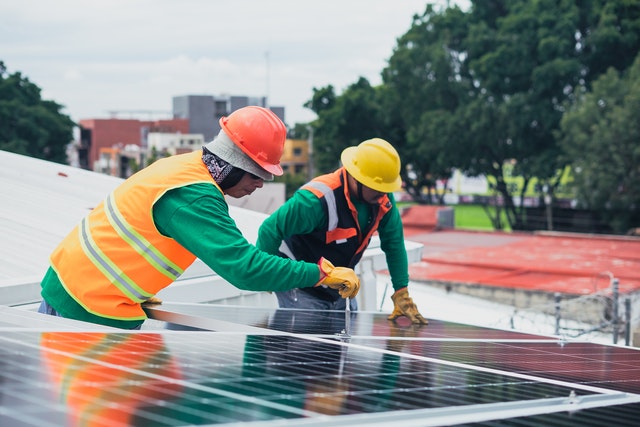Solar panels are a large investment but one with many benefits that make them worthwhile for most in the long term. Considering the money spent on getting solar panels installed, the last thing anyone would expect is for it to show signs of degradation after just a few years, with one of the more common problems being discoloration on the panels.
You can always choose to maintain your solar panels by properly cleaning them with the help of experts. K&B Solar Panel Cleaning will assist you in taking good care of your solar panels once you decide to install them for your home. Cleaning is one way to maintain the effectiveness of the solar panels and to avoid discoloration.
Solar panel discoloration is very noticeable, with the formerly white portions across the surface of the cell turning into a yellow or brown color, and it tends to happen just a few years after installation. It’s not just an eyesore on the panels, as it can cause the solar module to become less efficient, often being the first sign of more serious problems.
How Long Do Solar Panels Last?
Depending on the manufacturer, solar panels’ performance can be guaranteed for 25 – 30 years, but it’s very possible that your panels will go on to produce electricity for longer than that. The first 25 to 30 years after your solar installation is considered the system’s “useful life”, but panels can still produce electricity for decades longer. In fact, the world’s first modern solar panel is still producing electricity at the ripe age of 60!
What is a solar panel’s useful life? Just like a lot of other equipment, solar panels don’t perform at 100% for their entire life and then just stop working in year 30. Instead, solar panels, at a very slow rate, produce less electricity as they age. This process is called degradation.
Because of solar panel degradation, most panels’ production warranties change as they age. Manufacturers typically guarantee 90% of the panels’ production until the first ten years. After ten years, that percentage drops back to 80% for the remaining 15 – 20 years.
Why Do Solar Panels Get Discolored?
The problem occurs when ethylene vinyl acetate (EVA) film, a material used as an encapsulant on the panel, undergoes an uncontrolled chemical reaction. For example, certain chemicals used to treat the glass panels react with chemicals used in the silicon cells, resulting in the formation of acetic acid, which is one of the leading causes of discoloration.
However, there is an even more common cause of solar panel discoloration – exposure to sunlight. While this may sound strange given solar panels are designed to be exposed to sunlight, problems often happen when the EVA is made from cheaper materials.
EVA helps to maintain UV resistance in solar panels, with ultraviolet rays not being used by the panels, so when lower-quality materials are used for this the resistance isn’t as good. Eventually, prolonged UV exposure starts to discolor the EVA, causing it to turn yellow or brown. Again, this happens after the first few years.
How to Stop Solar Panels From Discoloration?
Unfortunately, there are few measures that you can take to prevent discoloration in solar panels, as it’s often the result of low-quality EVA, meaning the best way to stop it from happening is to ensure you buy from a reputable manufacturer using top quality materials for the back sheet.
Before buying panels, make sure to inquire about the EVA and its expected durability, or you could take things a step further and avoid buying solar panels that use EVA for the back sheet. Again, this needs to be done prior to buying, so what if you already have solar panels installed?
One measure that is thought to prevent discoloration is the use of UV-blocking glass panels. These prevent UV rays from passing through the glass, virtually eliminating the chances of discoloration in the first few years of purchase, so replacing the glass may be your best way to keep your solar panels in top condition!

